Bolivia, a landlocked country in central South America, boasts diverse geography, including Amazonian plains, tropical lowlands, mountains, and Andean plateaus. La Paz is the seat of government, while Sucre is the constitutional capital. Santa Cruz de la Sierra is its largest city and industrial center. Bolivia shares borders with Brazil, Paraguay, Argentina, Chile, and Peru. The country encompasses part of the Pantanal, the world's largest tropical wetland, along its eastern border. Its diverse climates and biomes contribute to a rich cultural and environmental landscape.
1903: Treaty of Petrópolis and Loss of Acre
In 1903, Bolivia signed the Treaty of Petrópolis, ceding the state of Acre to Brazil after facing the prospect of war.
October 1904: Treaty of Peace and Friendship Signed
In October 1904, Bolivia and Chile signed the Treaty of Peace and Friendship. As part of the agreement, Chile committed to constructing a railway connecting Arica and La Paz, aimed at enhancing the accessibility of Bolivian products to ports.
1909: Loss of Territory to Peru
In 1909, Bolivia lost the basin of the Madre de Dios River and the territory of the Purus in the Amazon to Peru through diplomatic channels.
1932: Start of the Chaco War
In 1932, the Chaco War began, marking a turning point in Bolivia's history and its relations with Paraguay.
1935: End of the Chaco War
In 1935, Bolivia's defeat by Paraguay in the Chaco War marked a turning-point.
1939: Andes temperature change
From 1939 to 1998 temperatures in the Andes increased by 0.1 °C per decade.
April 1943: Bolivia Enters World War II
In April 1943, Bolivia entered World War II as part of the Allies, with President Enrique Peñaranda declaring war on the Axis powers.
1945: Bolivia Founding Member of the UN
In 1945, Bolivia became a founding member of the United Nations.
1945: TAM Creation
TAM (a.k.a. TAM Group 71) has been a part of the FAB since 1945.
1950: Inter-census period (1950–1976)
The growth of the population in the inter-census periods (1950–1976 and 1976–1992) was approximately 2.05%, while between the last period, 1992–2001, it reached 2.74% annually.
1951: MNR Presidential Election Victory Denied
In 1951, the Revolutionary Nationalist Movement (MNR) was denied its victory in the presidential elections.
1952: MNR Revolution
In 1952, the MNR led a successful revolution, introducing universal suffrage, land reform, and nationalization of tin mines under President Víctor Paz Estenssoro.
1956: Start of Hernán Siles Zuazo's First Term
In 1956, Hernán Siles Zuazo began his first term as President of Bolivia.
1960: End of Hernán Siles Zuazo's First Term
In 1960, Hernán Siles Zuazo's first term as President of Bolivia ended.
1964: Military Junta Overthrows Paz Estenssoro
In 1964, a military junta overthrew President Paz Estenssoro at the outset of his third term.
1964: Bolivian Free Port in Rosario
Since 1964, Bolivia has had its own port facilities in the Bolivian Free Port in Rosario, Argentina.
1966: René Barrientos Elected President
In 1966, René Barrientos was elected president.
October 1967: Death of Che Guevara
In October 1967, Che Guevara was killed by a team of CIA officers and members of the Bolivian Army.
1969: Death of President René Barrientos
In 1969, the death of President René Barrientos led to a succession of weak governments.
1971: US-Backed Coup D'État
In 1971, Hugo Banzer led a US-backed coup d'état, replacing Juan José Torres' socialist government with a military dictatorship.
1971: Banzer Begins Dictatorship
In 1971, Hugo Banzer started his dictatorship.
1971: Hugo Banzer Installed as President
In 1971, Hugo Banzer was installed as president by the military, MNR, and others.
1976: Assassination of Juan José Torres
In 1976, Juan José Torres was kidnapped and assassinated as part of Operation Condor.
1976: Inter-census period (1950–1976)
The growth of the population in the inter-census periods (1950–1976 and 1976–1992) was approximately 2.05%, while between the last period, 1992–2001, it reached 2.74% annually.
1977: Creation of TAB
TAB – Transportes Aéreos Bolivianos, was created as a subsidiary company of the FAB in 1977.
1978: Banzer's Dictatorship Ends
In 1978, Banzer's Dictatorship ended.
1978: Banzer Ousted
In 1978, Hugo Banzer's regime was ousted after a period of suppressing dissent and human rights abuses.
1978: Fraudulent Elections
In 1978, elections in Bolivia were marked by fraud.
1979: Inconclusive Elections
In 1979, elections in Bolivia were inconclusive.
1979: OAS Resolution 426 Passed
In 1979, the Organization of American States (OAS) passed Resolution 426, declaring the Bolivian maritime claim issue a hemispheric problem.
1980: Andes temperature change
From 1980 to 2005 temperatures in the Andes increased by 0.33 °C per decade.
1980: Luis García Meza's Coup D'État
In 1980, General Luis García Meza carried out a coup d'état, leading to violent repression and widespread killings.
1980: Universidad Evangélica Boliviana Founded
In 1980, Universidad Evangélica Boliviana UEB was founded in Santa Cruz de la Sierra.
1981: García Meza Forced Out
In 1981, a military rebellion forced out García Meza.
October 1982: Hernán Siles Zuazo Becomes President Again
In October 1982, Hernán Siles Zuazo became president again, twenty-two years after the end of his first term.
1982: Democratically Elected Governments
Since 1982, Bolivia has been governed by democratically elected governments, marking a transition from previous dictatorships.
1985: Predominance of parties
From 1985 to 2005, the Revolutionary Nationalist Movement, Nationalist Democratic Action, and the Revolutionary Left Movement predominated in Bolivia.
1985: Presidents ceding power peacefully
In 1985, President Víctor Paz Estenssoro began a tradition of ceding power peacefully which has continued.
1989: Presidents ceding power peacefully
In 1989, President Víctor Paz Estenssoro continued a tradition of ceding power peacefully which has continued.
1990: Drinking Water and Sanitation Coverage Improvement
Bolivia's drinking water and sanitation coverage has greatly improved since 1990 due to a considerable increase in sectoral investment.
1990: Forest Cover
In 1990, Bolivia's forest cover was 57,804,720 ha.
1992: Establishment of ZEEBI
In 1992, the Special Economical Zone for Bolivia in Ilo (ZEEBI) was established, granting Bolivia a 99-year period to maintain a free port near Ilo, Peru.
1992: Inter-census period (1976–1992)
The growth of the population in the inter-census periods (1950–1976 and 1976–1992) was approximately 2.05%, while between the last period, 1992–2001, it reached 2.74% annually.
1993: Gonzalo Sánchez de Lozada Elected President
In 1993, Gonzalo Sánchez de Lozada was elected president and introduced the Plan de Todos and privatization policies.
1994: Protests Against Reforms Begin
From 1994, segments of society opposed reforms and economic restructuring, leading to frequent protests.
1994: Recovery of Native Baroque Religious Music
In 1994, an important body of Native Baroque religious music of the colonial period was recovered and has been performed internationally.
1994: Revisions to the constitution
Through revisions to the constitution in 1994, and subsequent laws, the government has initiated potentially far-reaching reforms in the judicial system as well as increasing decentralizing powers to departments, municipalities, and indigenous territories.
1995: Teachers' Strike
In 1995, a teachers' strike was defeated due to lack of support from other union members.
1996: Continued Protests Against Reforms
In 1996, protests continued against the reforms and economic restructuring, particularly in La Paz and the Chapare region.
1996: Satellite Imaging of Tiwanaku
In 1996, satellite imaging was used to map the extent of preserved suka kollus (flooded raised fields) across the three primary valleys of Tiwanaku
1997: Banzer Returns as President
In 1997, Hugo Banzer returned to Bolivian politics and was democratically elected as President.
1997: Quotas for Women Candidates
In 1997, a law established quotas requiring political parties to field candidates for public office that are at least 30% women.
1997: Hugo Banzer Wins Election
In the 1997 elections, General Hugo Banzer won with 22% of the vote and launched a policy to eradicate illegal coca.
1998: Andes temperature change
From 1939 to 1998 temperatures in the Andes increased by 0.1 °C per decade.
January 1999: Cochabamba Protests Erupt
In January 1999, large-scale protests erupted in Cochabamba in response to water privatization.
April 2000: Water Protests Continue
In April 2000, the Cochabamba water protests continued, driven by rising water prices due to privatization.
2000: End of Cochabamba Concession
A concession to foreign private companies in Cochabamba was prematurely ended in 2000.
May 2001: Carnaval de Oruro proclaimed by UNESCO
In May 2001, the "Carnaval de Oruro" was proclaimed by UNESCO as one of the first 19 "Masterpieces of the Oral and Intangible Heritage of Humanity".
August 2001: Banzer Resigns
In August 2001, President Banzer resigned due to being diagnosed with cancer.
2001: Religious Census
According to the 2001 census by the National Institute of Statistics of Bolivia, 78% of the population is Roman Catholic and 19% are Protestant.
2001: Most Spoken Language
According to the 2001 census, Spanish is the most spoken official language in Bolivia, spoken by two-thirds of the population.
2001: National Statistics Institute Census
According to the Bolivian National Statistics Institute (Instituto Nacional de Estadística, INE) census carried out in 2001, the population was 8,274,325.
2001: Household Increase
Between 2001 and 2012, there was an increase of 887,960 households in Bolivia.
2001: Banzer's Time as President ends
In 2001, Banzer's time as President was over
2001: End of Banzer's Presidency
In 2001, Hugo Banzer's term as the democratically elected President of Bolivia came to an end.
2001: Indigenous Language Census
In the 2001 census, 21.2% of the Bolivian population spoke Quechua, 14.6% spoke Aymara, and 0.6% spoke Guarani.
2001: Inter-census period (1992–2001)
The growth of the population in the inter-census periods (1950–1976 and 1976–1992) was approximately 2.05%, while between the last period, 1992–2001, it reached 2.74% annually.
June 2002: National Elections
In June 2002, former President Gonzalo Sánchez de Lozada placed first in the national elections with 22.5% of the vote.
October 2003: Bolivian Gas Conflict and Lozada's Resignation
In October 2003, the Bolivian gas conflict escalated, leading to martial law and, on 12 October 2003, the resignation of President Sánchez de Lozada.
2003: Gonzalo Sánchez de Lozada steps down
In 2003, President Gonzalo Sánchez de Lozada stepped down in the face of extraordinary circumstances.
January 2005: Carlos Mesa's First Resignation Attempt
In January 2005, Carlos Mesa attempted to resign as president but his offer was refused by Congress.
March 2005: Carlos Mesa's Second Resignation Attempt
On 22 March 2005, Carlos Mesa again offered his resignation to Congress.
2005: Andes temperature change
From 1980 to 2005 temperatures in the Andes increased by 0.33 °C per decade.
2005: Predominance of parties
From 1985 to 2005, the Revolutionary Nationalist Movement, Nationalist Democratic Action, and the Revolutionary Left Movement predominated in Bolivia.
2005: Evo Morales Wins Election
In 2005, Evo Morales won the presidential election with 53.7% of the votes.
2005: Carlos Mesa steps down
In 2005, President Carlos Mesa stepped down in the face of extraordinary circumstances.
2005: Financial Reserves
In 2005, financial reserves where a fifth of GDP. By 2014, this had increased to nearly two-thirds of total annual GDP.
2005: Hydrocarbon Law Referendum
In 2005, the Bolivian government held a binding referendum on the Hydrocarbon Law, which increased state control over hydrocarbon resources. This event can be understood as part of the Bolivian gas conflict which ultimately resulted in election of Evo Morales, Bolivia's first indigenous president.
May 2006: Morales Announces Hydrocarbon Re-nationalization
In May 2006, Evo Morales announced his intent to re-nationalize Bolivian hydrocarbon assets.
August 2006: Bolivian Constituent Assembly Opens
On 6 August 2006, Morales opened the Bolivian Constituent Assembly to write a new constitution.
2006: Mortality Rate Statistics
According to UNICEF, in 2006 the under-five mortality rate in Bolivia was 52.7 per 1000, and the infant mortality rate was 40.7 per 1000.
2006: Start of Growth Period
Between 2006 and 2009 the Morales administration spurred growth higher than at any point in the preceding 30 years.
2006: Evo Morales' Presidency Begins
In 2006, Evo Morales began his presidency in Bolivia, marking a period of economic growth and political stability.
2006: Ministry of Environment and Water Creation
In 2006, after the election of Evo Morales, a Ministry of Environment and Water was created. Morales reversed the privatization of the water distribution sector from the 1990s.
2006: Soy Producers
In 2006, almost 50% of soy producers in Bolivia were people from Brazil, or descendants of Brazilians.
2006: Bolivian economy change
In 2006, the Bolivian economic system started to become the most successful and stable in the region.
2006: End of La Paz/El Alto Concession
In 2006, the concession to foreign private companies in La Paz/El Alto was prematurely ended.
2006: Extreme Poverty Rate
In 2006, the extreme poverty rate in Bolivia was 38.2%.
2006: White Bolivian Population
In 2006, white Bolivians comprised about 14% of the population.
2006: Constitution drafting
The constitution, drafted in 2006–07 and approved in 2009, provides for balanced executive, legislative, judicial, and electoral powers, as well as several levels of autonomy.
2007: Gas revenue
From 2007 to 2017, what is referred to as the "government take" on gas totaled approximately $22 billion.
2007: Bank for Productive Development Created
In 2007, the government created a "Bank for Productive Development" through which small workers and agricultural producers can borrow easily.
2008: Declared Free of Illiteracy
In 2008, Bolivia was declared free of illiteracy, becoming the fourth country in South America to achieve this status.
2008: Bolivian Naval Force Strength
In 2008, the Bolivian Naval Force was approximately 5,000 strong, despite Bolivia being a landlocked country.
2009: End of Growth Period
Between 2006 and 2009 the Morales administration spurred growth higher than at any point in the preceding 30 years.
2009: Housing Classification
In 2009, 75.4% of Bolivian homes were classified as houses, huts, or Pahuichi.
2009: New Constitution and Name Change
In 2009, Bolivia's official name changed to "Plurinational State of Bolivia" with a new constitution.
2009: New constitution and renaming of country
In 2009, a new constitution was created, and the country was renamed to the Plurinational State of Bolivia. The new constitution allowed for one reelection of a president, triggering a dispute over whether Evo Morales could run for a second term.
2009: Government Gave in to Agribusiness Sector
In 2009, the government gave in to the agribusiness sector, which in return committed to end the pressure it was exerting and jeopardizing until the new constitution was in place.
2009: Constitution Water Rights
In 2009, the new Constitution, approved by referendum, makes access to water a fundamental right.
2009: Sucre assigned as national capital
The 2009 Constitution assigns the role of national capital to Sucre. La Paz continues to be the seat of government.
July 2010: UN Resolution on Safe and Clean Water
In July 2010, at the initiative of Bolivia, the United Nations passed a resolution recognizing as "fundamental" the "right to safe and clean drinking water".
2010: Prison Population in Bolivia
As of 2010, Bolivia has 54 prisons incarcerating around 8,700 people, managed by the Penitentiary Regime Directorate.
2010: Religion Data Archives
In 2010, The Association of Religion Data Archives recorded that 92.5% of Bolivians identified as Christian, 3.1% identified with indigenous religion, 2.2% identified as Baháʼí, and 1.9% identified as agnostic.
2010: Plurinational Electoral Organ established
In 2010, the Plurinational Electoral Organ was established as an independent branch of government, replacing the National Electoral Court.
October 2011: Judicial elections held
In October 2011, Bolivia held its first judicial elections to choose members of the national courts by popular vote, a reform brought about by Evo Morales.
2011: Population Demographics
According to the 2011 census, 59% of the population is between 15 and 59 years old, 39% is less than 15 years old.
November 2012: Census Data
In November 2012, the Bolivian government did not include the cultural self-identification "mestizo" in the census.
2012: Household Census
According to the 2012 census, there were 3,158,691 households in Bolivia.
2012: National Statistics Institute Census
According to the Bolivian National Statistics Institute (Instituto Nacional de Estadística, INE) census carried out in 2012, the population was 10,059,856.
2012: GDP Totals
Bolivia's estimated 2012 gross domestic product (GDP) totaled $27.43 billion at official exchange rate and $56.14 billion at purchasing power parity.
2012: Ethno-racial groups in Bolivia
Ethno-racial groups were measured in Bolivia in the 2012 census.
2013: Evo Morales sought a third term
In 2013, Evo Morales and his party attempted to secure a third term as President of Bolivia, leading to arguments from the opposition that it would be unconstitutional. The Bolivian Constitutional Court ruled that Morales' first term under the previous constitution did not count towards the term limit.
2013: Law to Guarantee Women a Life Free from Violence
In 2013, the Comprehensive Law to Guarantee Women a Life Free from Violence was passed.
2013: Law of the Rights of Mother Earth
In 2013, the Law of the Rights of Mother Earth was passed, which accords nature the same rights as humans.
2014: Underdeveloped Road Network
According to researchers with the Center for International Forestry Research (CIFOR), Bolivia's road network was still underdeveloped as of 2014.
2014: Reduced Borrowing Rates
As a result of improved banking supervision, borrowing rates have been reduced by a factor of three between 2014 and 2019 across all banking institutions for small and medium-sized agricultural producers.
2014: Highest Proportional Rate of Financial Reserves
In 2014 Bolivia boasted the highest proportional rate of financial reserves of any nation in the world, with Bolivia's rainy day fund totaling some US$15 billion.
2014: GDP Growth Ranking
In 2014 only Panama and the Dominican Republic performed better than Bolivia in all of Latin America in terms of GDP growth.
2014: Evo Morales re-elected for a third term
In 2014, Evo Morales was re-elected for a third term with 64.22% of the vote after the Constitutional Court ruled his first term didn't count towards term limits.
2014: Religion in Bolivia
In 2014, information was collected about religion in Bolivia.
2015: Forest area
In 2015, 100% of Bolivia's forest area was reported to be under public ownership.
2015: First Duplicated Highway Opened
In 2015, Bolivia opened its first duplicated highway: a 203 km stretch between the capital La Paz and Oruro.
2015: Announcement of Nuclear Reactor Plan
In 2015, it was announced that electrical power advancements include a planned $300 million nuclear reactor developed by the Russian nuclear company Rosatom.
2015: Gold Production
The country's gold production in 2015 is 12 metric tons.
2016: Poverty Reduction
Between 2006 and 2016, extreme poverty in Bolivia fell from 38.2% to 16.8%.
2016: Referendum on allowing Morales to run for a fourth term
In 2016, a Bolivian constitutional referendum was held to ask voters to override the constitution and allow Evo Morales to run for an additional term in office, but Morales narrowly lost the referendum.
2017: Gas revenue
From 2007 to 2017, what is referred to as the "government take" on gas totaled approximately $22 billion.
2017: Petition to allow Morales to run for a fourth term
In 2017, Evo Morales' party petitioned the Bolivian Constitutional Court to override the constitution, arguing that term limits violated the American Convention on Human Rights, seeking to allow Morales to run for a fourth term.
2018: Bolivia signs UN treaty on the Prohibition of Nuclear Weapons
In 2018, Bolivia demonstrated its commitment to nuclear disarmament by signing the UN treaty on the Prohibition of Nuclear Weapons.
2018: Forest Landscape Integrity Index
In 2018, Bolivia had a Forest Landscape Integrity Index mean score of 8.47/10, ranking it 21st globally out of 172 countries.
2018: Odesur Games
In 2018, Racquetball was the second most popular sport in Bolivia as for the results in the Odesur Games held in Cochabamba.
2018: Racial Classification Estimate
In 2018, a racial classification estimate indicated that mestizo (mixed White and Amerindian) comprised 68% of the population, indigenous people comprised 20%, white people comprised 5%, cholo comprised 2%, black people comprised 1%, other comprised 4%, and 2% were unspecified.
2018: Death on Yungas Road
In 2018, an Israeli woman was killed by a falling rock while cycling on Bolivia's Yungas Road, known as the "world's most dangerous road".
2018: Term limits are not a human rights violation
In 2018, the Inter-American Court of Human Rights determined that term limits are not a human rights violation; however, the Bolivian Constitutional Court ruled that Morales had permission to run for a fourth term in the 2019 elections.
2018: Single Health System Offered
Since 2018, the Single Health System has offered all Bolivians free medical care.
September 2019: TAM Suspends Operations
In September 2019, TAM – Transporte Aéreo Militar (the Bolivian Military Airline) suspended its operations.
November 2019: Governmental Resignations and Interim President
On November 11, 2019, all senior governmental positions were vacated following the resignation of Evo Morales and his government. On November 13, 2019, Jeanine Áñez declared herself acting President of Bolivia.
2019: Reduced Borrowing Rates
As a result of improved banking supervision, borrowing rates have been reduced by a factor of three between 2014 and 2019 across all banking institutions for small and medium-sized agricultural producers.
2019: Bolivian economy growth
Between 2006 and 2019, Bolivia's GDP grew from $9 billion to over $40 billion, real wages increased, GDP per capita tripled, foreign exchange reserves rose, inflation was essentially eliminated, and extreme poverty fell from 38% to 15%.
2019: Nominal GDP Increase
Bolivia's nominal GDP increased from 11.5 billion in 2006 to 41 billion in 2019.
2019: Mortality Rate Reduction
By 2019, the under-five mortality rate in Bolivia was reduced to 26 per 1000, and the infant mortality rate was reduced to 21.2 per 1000.
2019: Interruption of quick count process during elections
During the 2019 elections, the Transmisión de Resultados Electorales Preliminares (TREP) was interrupted, showing Morales with a lead of 46.86 percent. Two days later, the official count showed Morales fractionally clearing the 10-point margin needed to avoid a runoff election, leading to protests.
2019: Pan American Games Gold Medal
In 2019, Bolivia won a gold medal in the Men's Team racquetball event at the Pan American Games.
2019: Evo Morales steps down
In 2019, President Evo Morales stepped down in the face of extraordinary circumstances.
2019: Morales can run for a fourth term
In 2019, the Bolivian Constitutional Court allowed Morales to run for a fourth term in the upcoming elections, overruling the constitution and eliminating term limits for every office.
2019: Universal Healthcare System
In 2019, the Bolivian government created a universal healthcare system.
2019: End of Evo Morales' Presidency
In 2019, the presidency of Evo Morales came to an end amid accusations of democratic backsliding and authoritarianism.
April 2020: Interim government loan
In April 2020, the interim government took out a loan of $327 million from the International Monetary Fund (IMF).
April 2020: Loan from the International Monetary Fund
In April 2020, the interim government took out a loan of more than $327 million from the International Monetary Fund to meet the country's needs during the COVID-19 pandemic.
May 2020: Election Postponement
In May 2020, new elections were scheduled but then postponed due to the coronavirus pandemic.
June 2020: Report on the 2019 election
In June 2020, The New York Times reported that the OAS analysis immediately after the 20 October election was flawed yet fuelled "a chain of events that changed the South American nation's history".
October 2020: Election Date and Observers Report
In October 2020, the final proposed date for the elections took place on the 18th. Observers from the OAS, UNIORE, and the UN all reported that they found no fraudulent actions in the elections.
October 2020: Election of Luis Arce
On October 23, 2020, Luis Arce was elected as president.
November 2020: Luis Arce takes office as President
On November 8, 2020, Luis Arce took office as president.
2020: Forest Cover
In 2020, Bolivia's forest cover was around 47% of the total land area, equivalent to 50,833,760 ha, down from 57,804,720 ha in 1990.
2020: Discovery of new snake species
In 2020, a new species of snake, the mountain fer-de-lance viper, was discovered in Bolivia.
February 2021: Loan returned to the IMF
In February 2021, the Arce government returned a loan of around $351 million to the IMF, comprising a loan taken out by the interim government in April 2020 and interest, to protect Bolivia's economic sovereignty.
2021: Coca Cultivation and Cocaine Production
In 2021, estimated coca cultivation in Bolivia reached 39,700 hectares, with cocaine production estimated at 317 metric tons.
2022: Women in Parliament
As of 2022, 46% of parliamentary seats in Bolivia are held by women.
2023: Bolivia Classified as Partly-Free Democracy
As of 2023, Freedom House classifies Bolivia as a partly-free democracy, with a score of 66/100.
2023: Pan American Games Gold Medals
In 2023, Bolivia won gold medals in the Men's Team event and a Men's Singles Gold by world champion Conrrado Moscoso at the Pan American Games.
2023: Mining Production Ranking
In 2023, the country was the seventh largest world producer of silver; fifth largest world producer of tin and antimony; seventh largest producer of zinc, eighth largest producer of lead, fourth largest world producer of boron; and the sixth largest world producer of tungsten.
June 2024: Military Coup Attempt
On June 26, 2024, a military coup attempt led by Juan José Zúñiga ended after lasting only 5 hours, and Zúñiga was arrested.
2024: Global Innovation Index Ranking
Bolivia was ranked 100th in the Global Innovation Index in 2024.
Mentioned in this timeline
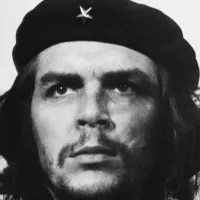
Ernesto Che Guevara was a prominent Argentine Marxist revolutionary physician...
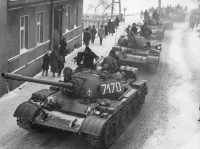
Martial law is the imposition of military rule in place...
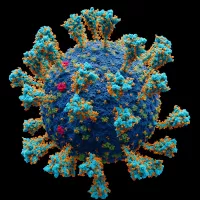
Coronaviruses are a family of RNA viruses affecting mammals and...
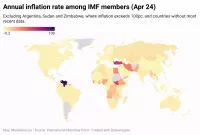
Inflation in economics signifies an increase in the average price...
The Dominican Republic is located on the eastern five-eighths of...
Argentina officially the Argentine Republic is located in the southern...
Trending
20 days ago Accenture & WEF: Scaling Innovation & Traceability for Circular Supply Chains & Waste Management

7 months ago Kevin Garnett: Celtics' Viral Message, Home Drama, and Sweet Gesture Highlights Recent Events.
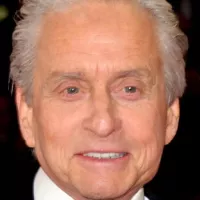
27 days ago Michael Douglas and Catherine Zeta-Jones Celebrate 25 Years of Marriage with Throwbacks
13 days ago Lawsuit Filed Over KISD Stabbing; Killeen Principal Resigns From Ira Cross
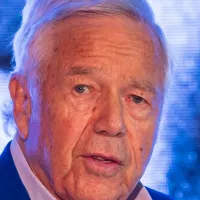
Robert Kraft is an American billionaire businessman best known as the chairman and CEO of the Kraft Group His portfolio...
The School District of Philadelphia SDP established in is the largest school district in Pennsylvania and the eighth-largest in the...
Popular

Candace Owens is an American conservative political commentator and author...

Ilhan Omar is an American politician currently serving as the...

XXXTentacion born Jahseh Dwayne Ricardo Onfroy was a controversial yet...

Tucker Carlson is an American conservative political commentator known for...

Kashyap Pramod Patel is an American lawyer who became the...
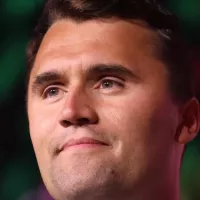
Charles James Charlie Kirk was a prominent American right-wing political...